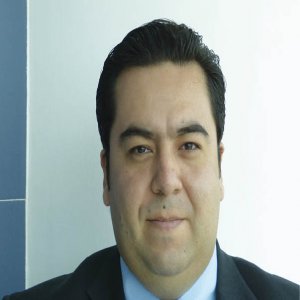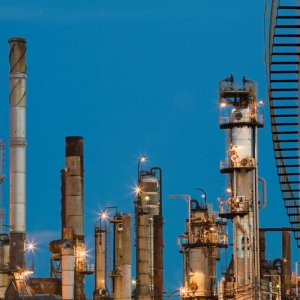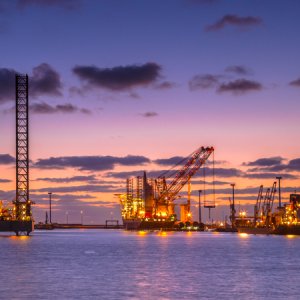Landmark Petrochemical Plant Finally Ready

STORY INLINE POST
Q: What still needs to be done before Etileno XXI will be completed?
A: The Etileno XXI project is entering its final stage. Operations are now scheduled to start in the last quarter of 2015, which constitutes a very minor and acceptable delay on a 65-month project. We are very excited as this is the biggest private investment in Mexico in almost a decade, and the first of the new wave of petrochemical plants planned for the Americas. The shale gas revolution in the US has meant that there are new sources of raw materials available, namely natural gas or ethane, which has motivated the industry to generate new complexes. Braskem Idesa’s project was designed to be finished in 2015, which has proved to be an excellent timeline. We are entering the petrochemical market when it is still relatively tight, without significant excess volumes being available and with very competitive raw materials. This means we will be ahead of new projects for roughly two years, since most such projects will not be ready until 2017 at the earliest. In parallel to the construction of Etileno XXI, we have been busy with the premarketing of polyethylene for over 18 months. Our objectives are to build a reputation with the market players and to learn their technical, commercial, and logistical issues before we start operations.
Q: Do you see most of Etileno XXI’s production staying within Mexico or being directed abroad?
A: We have a plan to secure an important initial market share within Mexico after one year. Obviously, we cannot dump hundreds of thousands of tonnes a year into the market so suddenly, which means our pre-marketing objectives are to get the domestic market ready for our arrival. We would like to have at least 50% of our production in the first year sold on the Mexican market and the other half exported to the US, Europe, South America, and Asia. Over the next three to five years, we should be growing our market share here and reducing our exports. We feel confident that we will sell between 50-70% of our production in Mexico within that timeframe.
Q: With oil and gas prices still low, what are the major challenges that you might have to overcome to reach a 50% market share in Mexico?
A: Oil prices have two effects. On the one side, they reduce the final price of new products because companies that use liquid raw materials have lower production costs, which drive prices down. At the same time, our own raw material costs have gone down, meaning our final margins have not varied significantly. Overall, the drop in the oil price has slightly reduced our margins but without any real impact. On the other side, it has had a positive impact by depressing the cost of final goods by redistributing the margins along the value chain. The current context is seriously affecting oil companies, but it is not necessarily affecting the general business climate. In fact, many economies have benefited from cheaper energy and related products. The reduction in energy prices, therefore, might reduce a product’s absolute value but not necessarily the margins drawn from it.
Q: Will the complications that Petrobras is experiencing in Brazil impact Braskem’s production in that country?
A: Not necessarily. What is happening to Petrobras is probably affecting its future rate of investment, not its current rate of production. In the long-term, Braskem Brazil could have fewer raw materials available for new projects, so some investment plans in Brazil could be delayed. In Mexico, Petrobras’ situation is not a factor. The raw materials we count on in Mexico already exist. In parallel to our investment, PEMEX is investing in upgrading its separation facilities, which will enable the company to extract more ethane from natural gas in order to supply us.
Q: How will your relationship with PEMEX change now that it will be both a supplier and a competitor?
A: Different PEMEX subsidiaries will supply and compete with us. PEMEX Petrochemicals will be a competitor on the polyethylene side, while PEMEX Gas will be a supplier on the gas side. Furthermore, there is no abundant product overlap between our portfolio and that of PEMEX Petrochemicals. 50% of PEMEX Petrochemicals’ production is linear polyethylene, which Braskem Idesa does not produce. Imports are our real competition, not PEMEX Petrochemicals. Mexico has a demand of around 2 million tonnes of polyethylene, of which PEMEX produces 600,000 tonnes. This leaves a deficit of about 1.4 million tonnes, 1 million of which will be produced by us. Our capacity alone is not enough to cover the full deficit, so our real competition will come from abroad. However, we believe that we can occupy a very important market share by producing locally, having good products, services, technical assistance, and just-in-time logistics. The vast US market also presents a potential alternative. Just as some imports will come into Mexico, there is great potential for us to export to the US market, especially when we consider volume. We might only seize 2-3% of the US demand, but that is still an extremely viable source of income. In this scenario, our potential available market increases significantly with North America and Latin America, as both are essentially made up of net importer countries.
Q: Where would potential new sources of raw materials come from within Mexico?
A: There is an imbalance within Mexico. The north does not have large gas production, but it is a strategic consumer region. The south is a large producer of oil and gas, exporting to other states within Mexico as well as to other countries. Therefore, it makes sense for the north of Mexico to buy as much gas as it can from the US, since that country’s supply is plentiful, close, and competitive. The pipelines that are being built by CFE to serve electrical stations in the north could result in a flow of natural gas from the north towards the south where Etileno XXI is based. There are also known gas reserves in which PEMEX has not invested because it has given priority to oil and because its investment capacity is limited. Once the market opens up, plenty of resources will finally be tapped up.
Q: How has Etileno XXI influenced the infrastructure expansions in Coatzacoalcos and beyond?
A: The first stage of the infrastructure expansion in the Port of Coatzacoalcos has been completed. Braskem Idesa has used all the new installations to their fullest as the port was the entrance point for our large equipment, including vast vessels. The expansions in the Port of Coatzacoalcos have been quite convenient for Braskem Idesa. Besides the port, we are looking at infrastructure concerning roads and railroads, which we require for moving our products. The raw material comes to us by pipeline, but we will have 1 million tonnes of final products exiting our plant. We plan to move 50-60% of these resources by railroad and the rest by truck. Although there is existing infrastructure in the region, Braskem Idesa feels that it needs a significant upgrade. For instance, there is only one railroad bridge connecting the north of Mexico to the south by crossing the Coatzacoalcos River. This bridge is old and fragile but there is no other rail connection along a similar route. It has become essential to create better infrastructure in the area, which the government has announced as a priority. This would involve building the Coatzacoalcos bypass as part of the larger Trans-Isthmic Corridor. If you look at the map, there is a short distance between Salina Cruz on the Pacific coast and Coatzacoalcos. The road between the two is not very large, the rail connection is not very modern, and the Port of Salina Cruz does not have enough volume. There is now a project to upgrade the Port of Salina Cruz and the transportation connections by rail and road, which could bring a huge flow of products from the east. In comparison to the Panama Canal, this modernized route would save a few days and millions of dollars in transportation. In the longer term, the Trans-Isthmic Corridor will be very beneficial for Mexico and the companies operating in the region. Our current routes are not congested but they could represent an externality at some point.
Q: What are the EPC challenges that still need to be overcome for the completion of Etileno XXI?
A: In January 2015, we reached 90% completion of the construction with roughly 17,000 people working on site. We will keep this number of staff for a couple of months and then start scaling down. We have already completed very important parts of the construction. For instance, our electrical substation was turned on in November 2014, so we are receiving electricity from CFE. From March to October 2015, we will conclude and pre-commission many systems, starting with water, steam, and all systems that are relevant for the cleaning of the plant. Essentially, as we conclude one system, we continue to advance the construction of the others. We are now finishing most of the mechanics and starting the electrical and instrumentation activities. In July, we will start testing the process units with gas, solvents, and hydrocarbons. By the end of September, everything will be ready for production to start in November. It will become increasingly relevant in the next few months to follow up on the pre-commissioning and commissioning activities, implying the need to test, clean, dry, and seal equipment.
Q: What are Braskem Idesa’s plans after Etileno XXI is completed?
A: Our foremost objective is to conclude the construction and the commissioning of Etileno XXI on schedule, on cost, and according to our safety requirements. The next goal is to start producing with quality and occupy the space that we believe we can fill in the local and export markets. Parallel to that, we are looking to generate cash and prepare to develop new opportunities. We believe that there are very interesting opportunities in Mexico within the actual framework of existing raw materials. If everything goes well, we will be ready to make new large investments in two to three years.






















